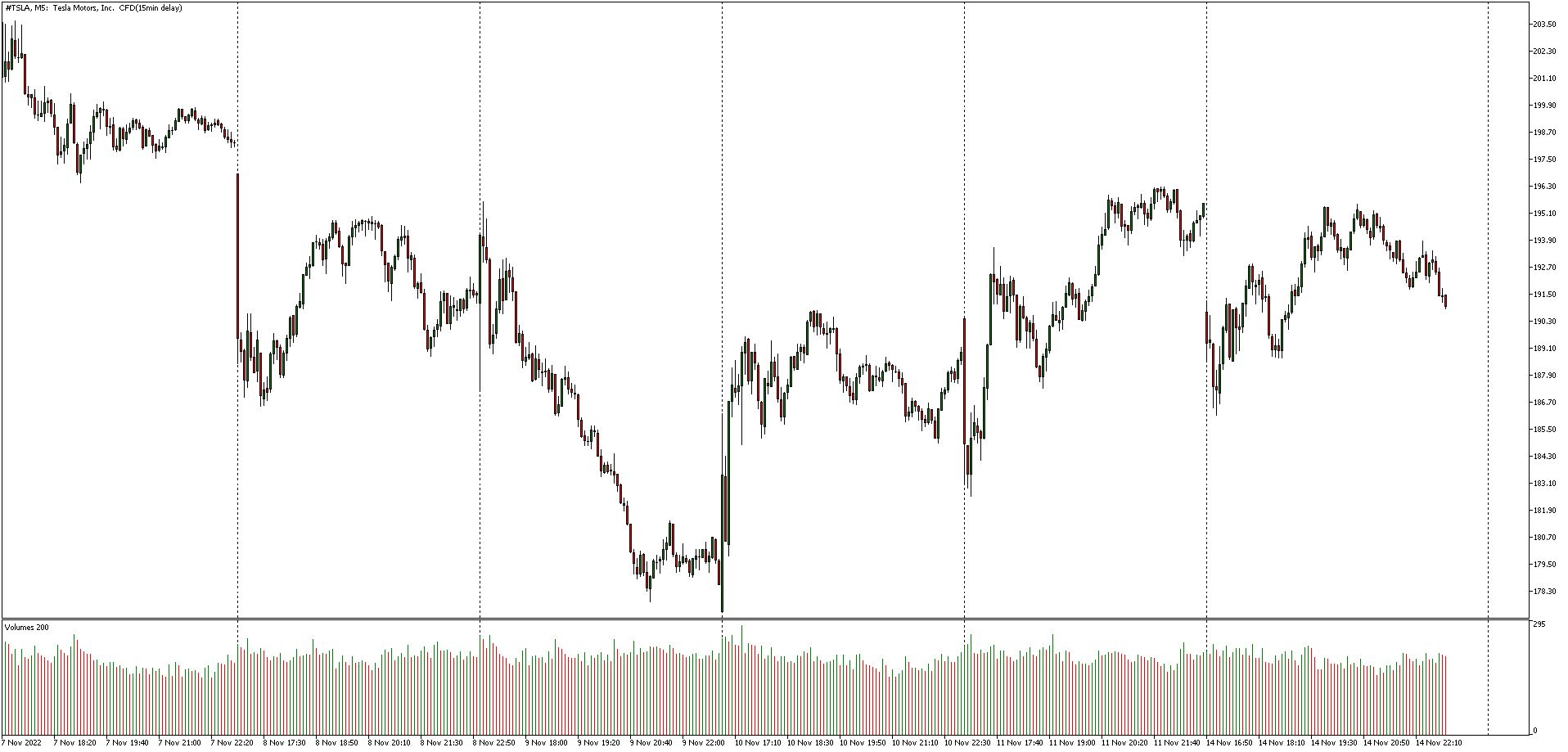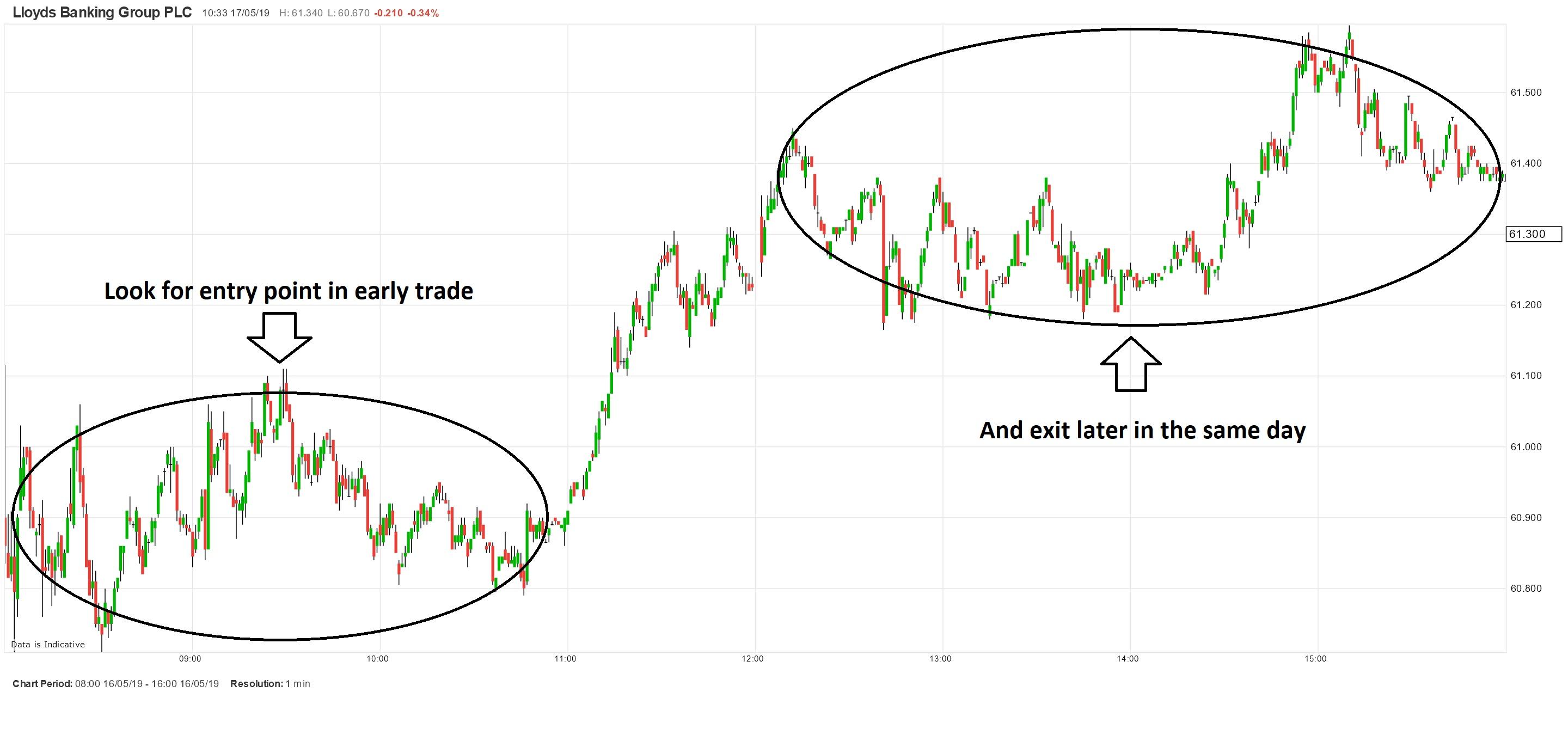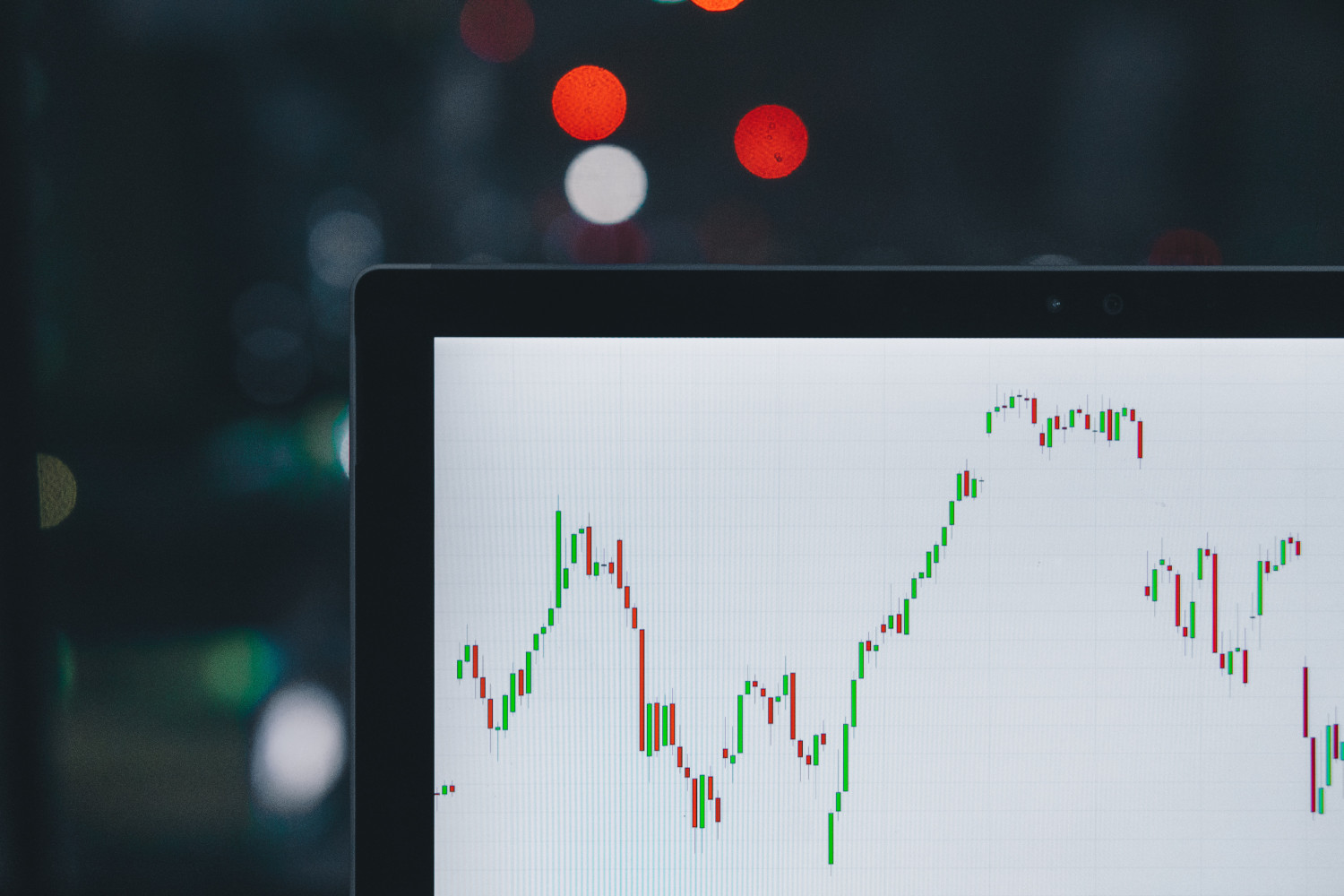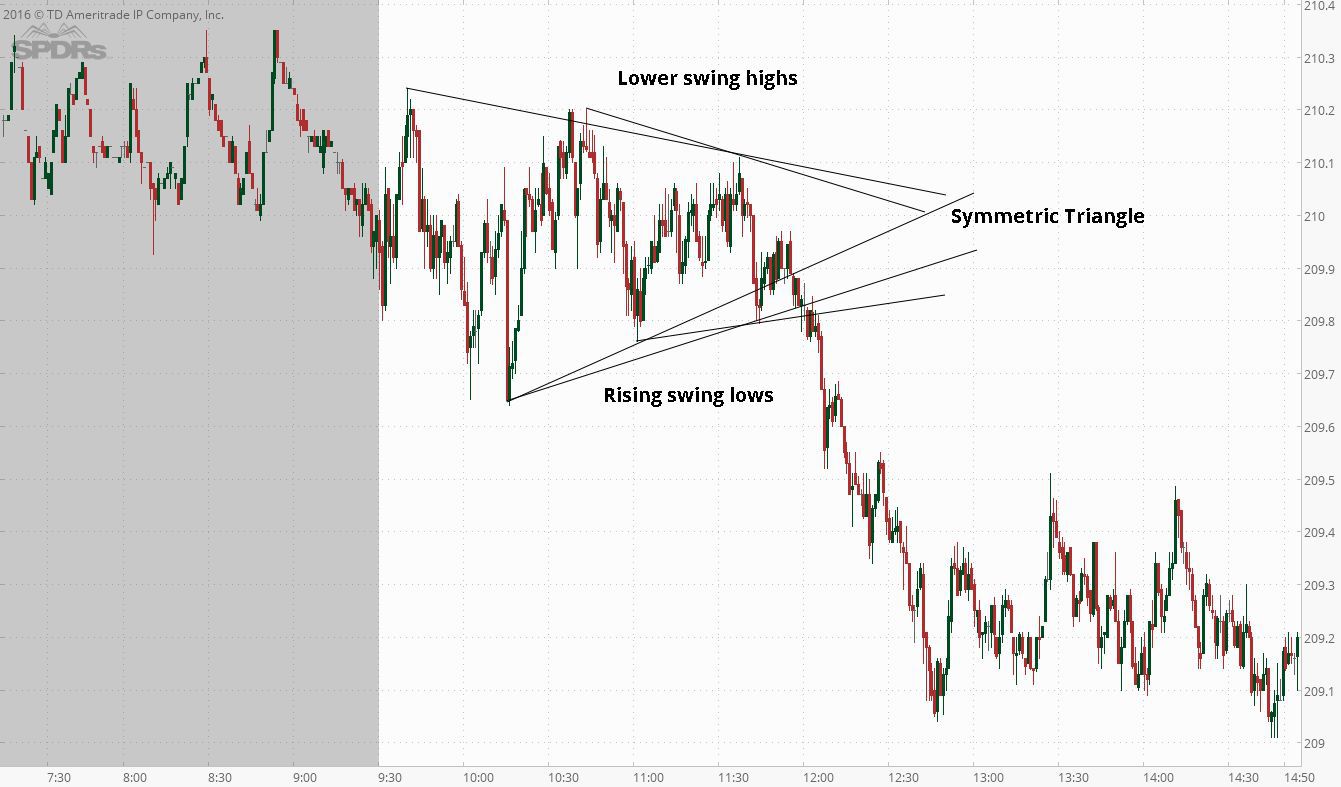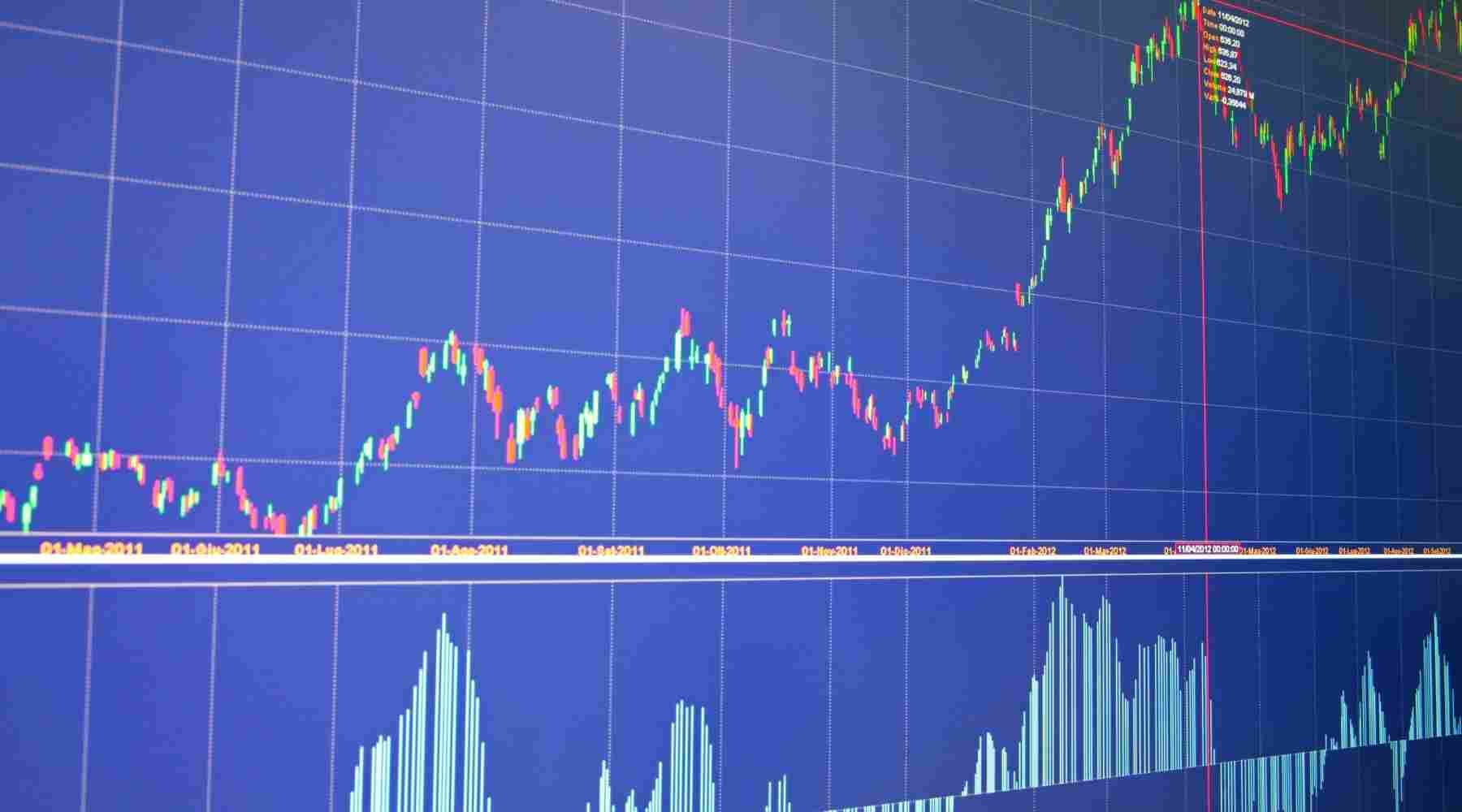Introduction
Welcome to the exciting world of day trading! If you’re looking to make quick trades in the stock market and take advantage of intraday price movements, then day trading may be the right strategy for you. However, before you dive into the world of day trading, it’s important to understand the key factors to consider when choosing stocks. This will help increase your chances of success and minimize potential risks.
Day trading involves buying and selling stocks within a single trading day, aiming to capitalize on short-term price fluctuations. It requires a disciplined approach, technical analysis skills, and a solid understanding of the stock market. With the right stock selection, you can take advantage of the volatility in the market and potentially profit from your trades.
In this article, we will explore the various factors to consider when choosing stocks for day trading. From understanding your trading goals and personality to analyzing stock volume, liquidity, and price volatility, we will cover all the essential aspects that can help you make informed trading decisions. Additionally, we will also discuss the importance of fundamental and technical analysis, utilizing screeners and filters, and keeping track of market news and catalysts.
Choosing the right stocks is crucial for day traders, as it sets the foundation for successful trades. By the end of this article, you will have a clear understanding of the key considerations involved in selecting stocks for day trading, enabling you to develop effective trading strategies and increase your chances of success in the dynamic world of day trading.
Understanding Day Trading
Day trading is a popular trading strategy where traders buy and sell financial instruments, such as stocks, within the same trading day. Unlike long-term investing, day traders seek to take advantage of intraday price movements and profit from short-term gains. This approach requires active monitoring of the market and quick decision-making.
One of the key characteristics of day trading is the emphasis on technical analysis. Day traders utilize various technical indicators, charts, and patterns to identify potential entry and exit points for their trades. They often focus on short-term trends, momentum, and price volatility to make their trading decisions.
Another important aspect of day trading is the use of leverage. Day traders often trade with margin accounts, which allow them to control a larger position with a smaller amount of capital. This amplifies both potential profits and losses, making risk management an essential component of day trading.
Day trading also requires traders to have a strong grasp of market dynamics and a clear understanding of the stocks or financial instruments they are trading. It involves staying up-to-date with market news, trends, and catalysts that can impact stock prices. Additionally, day traders need to be able to quickly interpret and react to market information to make timely trading decisions.
With day trading, traders aim to make small profits through multiple trades that can add up over time. This requires discipline, focus, and the ability to stick to a trading plan. Day traders must set realistic profit targets and adhere to predetermined stop-loss levels to protect themselves from significant losses.
It’s important to note that day trading carries specific risks and challenges. The fast-paced nature of day trading can result in significant trading costs, including commissions and fees. Moreover, the increased frequency of trades can lead to emotional and psychological pressures that can affect decision-making.
Despite the challenges, day trading can be a rewarding strategy for those who are willing to put in the time, effort, and dedication required to develop their skills. Understanding the fundamentals of day trading is the first step towards becoming a successful and profitable day trader.
Assessing Your Trading Goals and Personality
Before diving into day trading, it’s important to assess your trading goals and understand your own personality as a trader. This self-assessment will help you align your trading strategy with your individual strengths, preferences, and risk tolerance.
Start by defining your trading goals. Are you looking to generate additional income from day trading, or are you aiming to become a full-time day trader? Understanding your goals will guide your decision-making process and help you set realistic expectations for your trading journey.
Next, consider your risk tolerance. Day trading involves assuming risks, as you will be exposed to potential losses. Evaluate your ability to handle risk and determine how much capital you are willing to put at stake for day trading. It’s crucial to only risk what you can afford to lose without jeopardizing your financial stability.
Your personality traits can also influence your trading style. Are you comfortable making quick decisions under pressure? Can you handle the emotional rollercoaster of trading? Being aware of your temperament and emotional response to market fluctuations will enable you to tailor your trading strategy accordingly.
Some individuals thrive in high-stress environments and enjoy the fast-paced nature of day trading. They may be more inclined to take on higher-risk trades and make quick decisions. On the other hand, some traders prefer a more cautious approach and may focus on lower-risk setups and longer holding periods.
Additionally, consider your time commitment. Day trading requires active monitoring of the market throughout the trading day. Assess how much time you can dedicate to trading and whether day trading is compatible with your schedule and lifestyle.
Once you have assessed your trading goals and personality, you can begin to develop a trading plan that aligns with your strengths and preferences. Your trading plan should outline your entry and exit strategies, risk management techniques, and guidelines for evaluating potential trades.
Regularly review and reassess your trading goals and personality traits as you gain experience in day trading. As you become more familiar with your strengths and weaknesses as a trader, you can make adjustments to your trading strategies and refine your approach for better results.
Remember, each trader is unique, and there is no one-size-fits-all approach to day trading. Understanding your trading goals and personality will help you build a solid foundation and increase your chances of success in the exciting and potentially rewarding world of day trading.
Knowing the Different Types of Stocks
When it comes to day trading, it’s essential to have a good understanding of the various types of stocks available. Different stocks exhibit different characteristics, price movements, and levels of volatility, which can have a significant impact on your day trading strategy.
1. Blue-chip stocks – These are shares of well-established, large-cap companies with a history of stable earnings and a strong market presence. Blue-chip stocks are considered safe investments and usually offer lower volatility. They are ideal for traders who prefer a more conservative and less risky approach to day trading.
2. Growth stocks – These stocks belong to companies that are experiencing rapid growth and are expected to continue expanding at an accelerated pace. Growth stocks can offer significant potential for capital appreciation but tend to be more volatile. Day traders who are comfortable with higher risk and seek to capitalize on short-term momentum may find growth stocks attractive.
3. Value stocks – Value stocks are shares of companies that are considered undervalued based on fundamental analysis. These stocks often have low price-to-earnings (P/E) ratios and may be overlooked by the market. Day traders who prefer a more conservative strategy may look for value stocks that have the potential for price appreciation as the market recognizes their true value.
4. Penny stocks – Penny stocks are stocks traded at a very low price per share, typically below $5. These stocks are often associated with small companies or companies with financial difficulties. Penny stocks are known for their volatility and higher risk. While they can provide opportunities for significant gains, they can also lead to substantial losses. It is crucial to exercise caution and thorough research when trading penny stocks.
5. Dividend stocks – Dividend stocks are shares of companies that distribute a portion of their profits to shareholders in the form of dividends. These stocks tend to be more stable and provide a regular income stream for investors. Day traders may consider dividend stocks that offer both potential price appreciation and consistent dividend payments.
6. Sector-specific stocks – Stocks can also be categorized based on the sector or industry they belong to, such as technology, healthcare, energy, or finance. Each sector has its own dynamics and factors that influence stock prices. Day traders may focus on specific sectors based on their knowledge and expertise, as well as sector-specific news and events that can create short-term opportunities.
Understanding the different types of stocks can help you identify potential trading opportunities and align your trading strategy with the characteristics of the stocks you choose. It’s important to research and familiarize yourself with the specific attributes, risks, and potential rewards associated with each type of stock before entering any trades.
Fundamental Analysis vs. Technical Analysis
When it comes to analyzing stocks for day trading, two main approaches are commonly used: fundamental analysis and technical analysis. Each method provides valuable insights into a stock’s potential future price movements, but they differ in their focus and underlying principles.
Fundamental analysis involves evaluating the intrinsic value of a stock by analyzing various financial and non-financial factors related to the company. This approach considers factors such as revenue, earnings, industry trends, management quality, competitive advantage, and market conditions. Fundamental analysis helps determine whether a stock is overvalued or undervalued, providing insight into its long-term growth potential. Day traders using fundamental analysis may focus on stocks with strong fundamentals and potential catalysts that could drive short-term price movements.
Technical analysis, on the other hand, focuses on analyzing historical price and volume data to identify patterns, trends, and potential trading opportunities. Technical analysts believe that historical price movements can predict future price movements, and they use various techniques and indicators to spot potential entry and exit points. Common tools used in technical analysis include moving averages, support and resistance levels, trendlines, and chart patterns. Day traders who employ technical analysis often rely on short-term price fluctuations and momentum to make their trading decisions.
Both fundamental analysis and technical analysis have their strengths and weaknesses, and many traders use a combination of the two approaches. Fundamental analysis helps traders understand the long-term prospects of a company and its industry, while technical analysis provides insight into short-term price movements and potential trading opportunities.
It’s important to note that fundamental analysis may be more suitable for long-term investors, as it takes into account the overall health and potential of a company. However, day traders can also benefit from incorporating fundamental analysis by considering news events, earnings reports, and other financial data that can impact short-term price movements.
Technical analysis, on the other hand, is particularly useful for day traders who aim to profit from short-term price movements and take advantage of intraday trading opportunities. By analyzing historical price patterns and indicators, day traders can identify potential entry and exit points for their trades.
Ultimately, the choice between fundamental analysis and technical analysis depends on your trading style, preferences, and the specific stocks you are interested in trading. It’s advisable to gain a basic understanding of both approaches and experiment with different strategies to find what works best for you.
By combining the strengths of fundamental analysis and technical analysis, you can make more informed trading decisions and increase your chances of success in the dynamic world of day trading.
Utilizing Screeners and Filters
Screeners and filters are powerful tools that can assist day traders in narrowing down their focus to specific stocks that meet their trading criteria. These tools help traders efficiently scan and analyze a large number of stocks based on predefined parameters, saving time and effort in the selection process.
Stock screeners are software tools or platforms that allow traders to filter stocks based on specific criteria. Traders can input parameters such as market capitalization, volume, price, sector, and financial ratios to generate a list of stocks that meet their desired criteria. Stock screeners enable traders to quickly identify potential trading opportunities based on their specific preferences and trading strategies. They can be customized to suit individual needs and can help uncover stocks that may have otherwise been overlooked.
When using a stock screener, it’s important to have a clear understanding of the criteria and key indicators that are important for your trading strategy. By refining your search based on specific parameters, you can focus on stocks that align with your trading goals and increase the probability of finding suitable trade setups.
Filters are another valuable tool in a day trader’s arsenal. Filters refine a trader’s search by applying additional criteria or conditions to the results generated by a stock screener. For example, a filter could be used to exclude stocks with lower trading volumes or stocks in specific sectors that are not of interest to the trader.
Utilizing screeners and filters can help traders efficiently sort through the vast universe of stocks and zero in on the ones that match their trading preferences and criteria. By using these tools, traders can save time and effort in manual stock analysis and focus their attention on the most promising opportunities.
It’s important to note that while screeners and filters can be powerful tools, they should not be solely relied upon for trading decisions. It’s crucial to conduct further research and analysis on the identified stocks to ensure they meet both fundamental and technical criteria. Screeners and filters should be used as a starting point in the stock selection process, and traders should dig deeper into each potential trade before making decisions.
Remember to regularly review and update your screening and filtering criteria as market conditions and your trading strategy evolve. By utilizing screeners and filters effectively, day traders can streamline their stock selection process and increase their chances of identifying profitable trading opportunities.
Analyzing Stock Volume and Liquidity
When selecting stocks for day trading, one crucial factor to consider is the stock’s volume and liquidity. Volume refers to the number of shares being traded during a specific period, while liquidity refers to the ease with which a stock can be bought or sold without significantly impacting its price. Analyzing stock volume and liquidity is essential to ensure efficient trade execution and mitigate potential risks.
Volume plays a significant role in day trading as it indicates the level of activity and interest in a particular stock. Higher volume suggests greater liquidity and tighter bid-ask spreads, making it easier for day traders to enter and exit trades at desired prices. Stocks with high volume tend to have more active price movements, presenting more opportunities for profit.
Low-volume stocks, on the other hand, may exhibit wider bid-ask spreads, making it more challenging to execute trades at favorable prices. Additionally, low volume can lead to increased price volatility, which may result in slippage or difficulty getting orders filled at desired levels. It’s generally advisable for day traders to focus on stocks with sufficient trading volume for smooth trade execution.
When analyzing volume, it’s important to consider the average daily trading volume over a specific period, such as the past few weeks or months. Comparing current volume to average volume can help identify stocks with unusually high or low trading activity. Day traders often look for stocks that experience above-average volume spikes, as such spikes can indicate increased interest and potential price movements.
Liquidity is closely related to volume and refers to the ease of trading a particular stock without causing significant price fluctuations. Liquid stocks tend to have tight bid-ask spreads, allowing traders to buy or sell shares at more competitive prices. In contrast, illiquid stocks can have wider spreads, making it costlier to execute trades.
When assessing liquidity, it’s important to consider both overall market liquidity and the specific stock’s liquidity. Highly liquid stocks are usually those of well-established companies with large market capitalizations. These stocks are often actively traded and have a significant number of market participants, ensuring ample liquidity for day traders.
Keep in mind that liquidity can vary throughout the day, with generally higher levels during market open and close. It’s important to be mindful of liquidity when entering and exiting trades to ensure efficient execution and minimize the impact of market orders on the stock’s price.
By analyzing stock volume and liquidity, day traders can identify stocks that not only offer potential trading opportunities but also exhibit sufficient liquidity and trading activity for smooth trade execution. Adequate volume and liquidity are crucial for minimizing slippage, executing trades at desired prices, and managing risk effectively in the fast-paced world of day trading.
Evaluating Stock Price Volatility and Range
When selecting stocks for day trading, it’s important to evaluate the stock’s price volatility and range. Price volatility refers to the degree of fluctuation in a stock’s price over a given period, while price range indicates the difference between a stock’s highest and lowest prices during a particular time frame. Analyzing these factors can help day traders identify stocks that offer potential profit opportunities based on their risk tolerance and trading strategy.
Price volatility is a measure of how much a stock’s price typically moves up and down. High volatility implies significant price movements, both in terms of magnitude and frequency, which can create opportunities for profit. Day traders often seek highly volatile stocks as they can provide ample trading opportunities in a short period.
One commonly used indicator of price volatility is the Average True Range (ATR), which calculates the average price range for a stock over a specific period. A higher ATR value indicates greater volatility. By comparing a stock’s ATR to its previous levels or to other stocks in the same sector, day traders can identify stocks with elevated price volatility and potentially higher profit potential.
Understanding the level of price volatility is important for setting realistic profit targets and determining appropriate stop-loss levels. Highly volatile stocks may offer greater profit potential, but they also entail higher risk. It’s crucial to adapt your trading strategy and risk management techniques accordingly.
Price range refers to the difference between the high and low prices of a stock within a given time frame. A wide price range suggests significant price fluctuations, while a narrow range indicates more stable price movements. Evaluating the price range can help day traders assess the potential for profit within a single trading day.
Day traders often look for stocks that exhibit substantial price ranges, as wider ranges provide more opportunities for buying at low prices and selling at high prices. Stocks with narrow price ranges may limit profit potential, as the price tends to remain relatively stable.
It’s important to note that price volatility and range can vary across different time frames. Higher intra-day volatility can be ideal for day trading, while longer-term price volatility may be more suitable for swing trading or position trading. Consider your preferred trading style and time frame when evaluating price volatility and range.
By evaluating stock price volatility and range, day traders can identify stocks that align with their risk appetite and trading strategies. Highly volatile stocks can provide abundant trading opportunities, but they also carry higher risk. Evaluate pricing patterns, technical indicators, and market conditions to select stocks that offer the potential for profitable intraday trades.
Incorporating Support and Resistance Levels
Support and resistance levels are essential tools for day traders as they provide valuable insights into potential price levels at which a stock may experience buying support or selling pressure. Understanding and incorporating these levels into your trading strategy can help you identify optimal entry and exit points, manage risk, and increase the chances of profitable trades.
Support levels are price levels at which a stock has historically found buying interest, causing the price to bounce back from a decline. These levels act as a floor, as buyers perceive the stock to be undervalued and step in to purchase shares, supporting the price. Traders often look for support levels to place buy orders or set stop-loss orders below these levels to protect against potential losses.
Resistance levels are price levels at which a stock has historically faced selling pressure, causing the price to retreat from further increases. These levels act as a ceiling, as sellers perceive the stock to be overvalued and tend to sell shares, preventing the price from rising further. Traders often look for resistance levels to place sell orders or set profit targets near or above these levels.
Support and resistance levels can be identified through various technical analysis tools and techniques. Chart patterns, trendlines, moving averages, and previous price highs and lows are commonly used to identify these levels. Traders often prefer to see multiple instances of the price reacting at or near a specific level to consider it as a reliable support or resistance level.
When incorporating support and resistance levels into your trading strategy, it’s important to consider their significance in relation to the current market conditions. Stronger support or resistance levels are those that have been tested multiple times and have held firm, indicating strong buying or selling pressure. Such levels carry more weight and are more likely to influence future price movements.
It’s important to remember that support and resistance levels are not fixed and can shift over time. Market conditions, news events, and changes in supply and demand can cause these levels to break or weaken. It’s crucial to regularly reassess and adjust your support and resistance levels based on current market data and price action.
Incorporating support and resistance levels into your trading strategy can help you make more informed trading decisions. By identifying these levels, you can set more precise entry and exit points, manage risk more effectively, and increase the potential profitability of your trades. However, it’s essential to combine this analysis with other technical indicators, chart patterns, and market context to make well-rounded trading decisions.
Keeping an Eye on Market News and Catalysts
In the fast-paced world of day trading, staying informed about market news and catalysts is crucial. Market news and catalysts refer to events, announcements, economic data, and other factors that can significantly impact stock prices. By keeping an eye on these developments, day traders can identify potential trading opportunities and make informed decisions.
Market news and catalysts can come in various forms. They may include earnings reports, mergers and acquisitions, product launches, regulatory changes, economic indicators, geopolitical events, or even social media trends. These factors can cause stock prices to move rapidly and present both opportunities and risks for day traders.
Traders should follow financial news sources, economic calendars, and social media platforms to ensure they stay up-to-date with all relevant market information. By doing so, they can be aware of potential market-moving events and adjust their trading strategies accordingly.
When incorporating market news and catalysts into your trading strategy, it’s important to discern the potential impact of such events on specific stocks or sectors. Some news may have a direct and immediate impact on a stock’s price, while others may have a more indirect or delayed effect. Understanding the relationship between news and stock price movements is essential for identifying profitable trading opportunities.
Moreover, traders should also pay attention to market sentiment and market-wide news that can impact overall market conditions. For example, news related to interest rates, inflation, or geopolitical tensions can affect the overall market sentiment and impact a broad range of stocks.
It’s important to note that not all news and catalysts are created equal in terms of impact. Some events may lead to short-term price fluctuations, while others can result in more significant and sustained price movements. Traders must evaluate the potential impact and consider the duration of the effect when incorporating news into their trading decisions.
Additionally, traders should exercise caution when trading around news events, as increased volatility and rapid price movements can lead to unpredictable outcomes. Setting appropriate risk management measures, such as stop-loss orders, is crucial to mitigate potential losses during volatile periods.
By keeping an eye on market news and catalysts, day traders can gain insights into potential trading opportunities and make informed decisions. It’s important to stay informed, evaluate the impact of news and catalysts on individual stocks or sectors, and exercise caution when trading around these events to maximize the potential for profitable trades.
Reviewing Historical Stock Performance
When choosing stocks for day trading, reviewing the historical performance of a stock is an important step in the research process. By studying a stock’s past price movements and patterns, day traders can gain insights into its potential future price movements and volatility.
Reviewing a stock’s historical performance helps traders identify trends, support and resistance levels, and recurring price patterns. Traders often use technical analysis tools, such as chart patterns, moving averages, and indicators, to analyze historical data and make informed trading decisions.
Here are some key aspects to consider when reviewing historical stock performance:
Trends: Analyzing the historical price trends of a stock is essential in identifying the stock’s overall direction and potential for profitability. Traders look for uptrends, downtrends, or periods of consolidation to determine whether a stock is in a favorable trading environment.
Support and Resistance Levels: Reviewing historical price data helps identify significant support and resistance levels, which are price levels where the stock has historically shown buying or selling pressure. These levels can provide guidance for entry and exit points and help traders set profit targets and stop-loss orders.
Chart Patterns: Certain chart patterns, such as head and shoulders, triangles, or double bottoms, can indicate potential price reversals or continuation of trends. Analyzing historical charts can help traders identify these patterns and make informed trading decisions accordingly.
Volatility: Examining a stock’s historical volatility can provide insights into its potential price range and the level of risk associated with trading it. Volatile stocks offer more opportunities for day traders due to larger price movements, but they also carry higher risk.
Volume: Historical volume data allows traders to analyze the level of buying and selling interest in a stock. Higher trading volume can indicate increased liquidity, tighter bid-ask spreads, and more active price movements, making it easier to buy or sell shares at desired prices.
While historical data is valuable, it’s crucial to recognize that past performance does not guarantee future results. Market conditions, investor sentiment, and other factors can change, impacting a stock’s behavior.
Combining historical analysis with other forms of analysis, such as fundamental analysis and consideration of current market conditions, enhances the overall understanding of a stock’s potential. Traders should also keep in mind that the success of day trading relies on nimble and quick decision-making, as day traders aim to capitalize on short-term price movements.
Overall, reviewing historical stock performance is an essential step in the selection process for day traders. By analyzing trends, support and resistance levels, chart patterns, volatility, and volume, traders can gain insights into a stock’s potential future movements and make more informed trading decisions.
Considering Sector and Industry Trends
When choosing stocks for day trading, it’s important to consider sector and industry trends. Sector and industry trends refer to the broader performance and outlook of specific sectors or industries within the stock market. Analyzing these trends provides valuable insights into the potential opportunities and risks associated with trading stocks within a particular sector or industry.
Sector trends: The stock market is divided into various sectors, such as technology, healthcare, finance, energy, consumer goods, and more. Each sector consists of companies that operate in a specific field or industry. Understanding the overall trends and dynamics within a sector can help day traders identify potential trading opportunities.
Monitoring sector trends involves analyzing factors such as industry growth rates, regulatory changes, technological advancements, and economic conditions that may impact the overall performance of companies within a specific sector. For example, if the technology sector is experiencing rapid growth due to advancements in artificial intelligence, day traders may focus on trading stocks within this sector to capitalize on the upward trend.
Industry trends: Industries are even more specific than sectors, focusing on a particular product or service. Each industry can have its own unique factors and trends that influence the performance of its stocks. For instance, within the technology sector, specific industries could include software development, semiconductor manufacturing, or e-commerce.
Monitoring industry trends involves assessing factors such as consumer demand, innovation, competitive landscape, and market dynamics specific to that industry. By understanding the trends and developments within an industry, day traders can identify stocks that are likely to perform well due to industry-specific factors.
Considering sector and industry trends allows day traders to focus their attention on stocks within sectors or industries that are exhibiting positive growth prospects. By aligning their trades with the overall market trends, they can increase the likelihood of finding successful trading opportunities.
Traders can monitor sector and industry trends through financial news, industry-specific publications, economic reports, and sector-focused analysis provided by brokerage firms or research platforms. Following market experts and analysts who specialize in specific sectors or industries can also provide valuable insights into the latest trends.
It’s important to note that while sector and industry trends can provide guidance, traders should still conduct individual stock analysis to ensure a comprehensive understanding of the specific company’s financial health, competitive position, and other important factors.
By analyzing sector and industry trends, day traders can gain insights into the broader market forces that impact specific sectors and industries. This knowledge allows them to focus on stocks within sectors or industries that are poised for potential growth, enhancing the probability of successful trades.
Avoiding Illiquid and Penny Stocks
When selecting stocks for day trading, it’s crucial to avoid illiquid and penny stocks. Illiquid stocks refer to those with limited trading activity and low trading volume, while penny stocks are shares of companies traded at very low prices, typically below $5. Trading these types of stocks can present significant challenges and risks for day traders.
Illiquid stocks: Illiquid stocks are characterized by low trading volume and limited market interest. These stocks often have wider bid-ask spreads, meaning the difference between the highest price buyers are willing to pay and the lowest price sellers are willing to accept can be significant. As a result, executing trades at desired prices can be challenging, leading to potential slippage and higher trading costs.
Furthermore, when trading illiquid stocks, there may not be enough buyers or sellers in the market, which can result in price volatility and increased risk. It may be difficult to exit positions quickly, and unwinding large positions could cause significant price movements.
Penny stocks: Penny stocks are often associated with companies that have small market capitalizations, limited financial resources, or uncertain prospects. These stocks are typically traded on over-the-counter (OTC) markets or on smaller exchanges. Trading penny stocks can be particularly risky due to their low liquidity, high price fluctuations, and susceptibility to market manipulation.
Day traders should exercise caution when considering penny stocks as they can lack transparency and reliable financial information. Penny stocks are often subject to pump and dump schemes, where stock promoters artificially inflate the stock’s price before dumping their shares, leaving other traders at a loss.
Day traders seeking to minimize risk and maximize trading opportunities should focus on stocks with sufficient liquidity and trading volume. Liquid stocks tend to have tighter bid-ask spreads, making it easier to enter and exit positions at desired prices. They also offer more opportunity for finding suitable trade setups and taking advantage of short-term price fluctuations.
When assessing the liquidity of a stock, it’s important to consider the average daily trading volume, the stock’s trading history, and its overall market popularity. Stocks that are part of major indices or have high market capitalizations often have greater liquidity.
While the allure of low-priced stocks or the potential for quick gains may be tempting, day traders should carefully evaluate the risks associated with illiquid and penny stocks. Prioritizing trading stocks with reasonable liquidity and sufficient trading volume not only increases the chances of executing trades at desired prices, but it also helps minimize the risks associated with low liquidity and market manipulation.
Managing Risk and Setting Stop Losses
Risk management is a crucial aspect of day trading, and setting appropriate stop losses plays a vital role in minimizing potential losses. Day traders should implement effective risk management strategies to protect their capital and preserve their trading account. By managing risk and setting stop losses, day traders can limit their exposure and ensure they stay within their predetermined risk tolerance levels.
Risk management: Day traders should establish clear risk management guidelines before entering any trade. This includes determining the maximum amount of capital they are willing to risk per trade, setting a maximum percentage of their trading account they are comfortable losing, and defining the acceptable risk-to-reward ratio for each trade. Adhering to these risk management principles helps traders maintain discipline and avoid potentially catastrophic losses.
Stop losses: A stop loss is an order placed by a trader to automatically sell a position if it reaches a specified price level. Setting a stop loss is an essential risk management technique that helps limit losses in case a trade moves against expectations. The stop loss level should be carefully determined based on volatility, support and resistance levels, and the trader’s risk tolerance.
Stop losses provide a defined exit point for a trade, allowing traders to protect their capital and limit potential losses. They help avoid emotional decision-making and prevent traders from holding onto losing positions in the hope that they will turn around. By setting a predetermined stop loss, traders can minimize the impact of losing trades and focus on identifying new profitable opportunities.
When setting a stop loss, it’s important to consider the stock’s volatility and the potential for price fluctuations. Placing the stop loss too tight may trigger unnecessary exits due to minor price fluctuations, while setting it too wide may expose traders to larger losses. Traders should analyze the stock’s price history, support and resistance levels, and other technical indicators to determine an appropriate stop loss level.
Traders should also take into account the size of their trading position when setting stop losses. Larger position sizes may require wider stops to accommodate market volatility, while smaller positions can use tighter stops. The goal is to strike a balance between protecting capital and allowing the trade enough room to move in the desired direction.
It’s crucial to adhere to the stop loss once it is set. Deviating from the stop loss level due to emotions or desire to recover losses can increase the risk of substantial losses. Discipline and consistency in applying stop losses are essential for effective risk management.
Managing risk and setting appropriate stop losses are critical components of successful day trading. By implementing sound risk management techniques and setting realistic stop loss levels, day traders can effectively control their risk exposure and preserve their trading capital, increasing the potential for long-term trading success.
Practicing Paper Trading and Backtesting
Practicing paper trading and backtesting are valuable tools for day traders to refine their trading strategies, test new ideas, and gain valuable experience without risking real money. These simulation techniques allow traders to gain confidence, improve their decision-making skills, and evaluate the potential profitability of their trading strategies.
Paper trading, also known as simulated trading or virtual trading, involves making hypothetical trades without using real money. Traders can use paper trading platforms that provide real-time market data and order execution capabilities. By practicing with virtual funds, traders can familiarize themselves with the trading platform, test different strategies, and assess their performance without any financial risk.
Paper trading allows traders to learn from their mistakes and refine their trading techniques. It provides an opportunity to observe how different strategies perform in various market conditions, identify strengths and weaknesses in trading approaches, and develop a disciplined and consistent trading mindset.
Backtesting involves analyzing historical market data to test a trading strategy against past price movements. Traders use historical data to simulate trades and evaluate the performance of their strategies. This method helps traders understand how their strategies would have fared in the past and provides insights into their potential effectiveness in the future.
Backtesting involves setting specific trading rules and applying them to historical data to see how the strategy would have performed. Traders can assess various factors such as risk-reward ratios, win-loss ratios, and maximum drawdowns to determine the effectiveness of their strategies. Backtesting helps traders identify profitable strategies, optimize parameters, and make necessary adjustments before applying them in real-time trading.
Both paper trading and backtesting enable traders to gain practical experience, evaluate the viability of their trading strategies, and refine their approach without risking real money. They provide an opportunity to learn from successes and failures, identify patterns, and validate the effectiveness of trading ideas.
While paper trading and backtesting can help traders develop their skills and gain confidence, it’s important to remember that they are not a substitute for real-time trading with real money. The emotional and psychological aspects of trading real money cannot be fully replicated in simulated environments. Therefore, it is important for traders to gradually transition from paper trading to live trading with appropriate risk management techniques in place.
Practicing paper trading and backtesting are valuable steps in a trader’s development. They provide a safe environment to learn, experiment, and fine-tune trading strategies. By utilizing these tools effectively, traders can increase their chances of success when they eventually enter the live trading arena.
Conclusion
Choosing the right stocks for day trading is a critical aspect of a trader’s success. By considering various factors such as trading goals, personality, stock types, analysis techniques, and market conditions, day traders can increase their probability of successful trades.
Understanding day trading and its fast-paced nature is essential for developing effective trading strategies. Whether utilizing fundamental or technical analysis, incorporating screeners and filters, or analyzing volume and liquidity, day traders can fine-tune their stock selection process and identify potential trading opportunities.
Key considerations in the stock selection process include evaluating historical stock performance, considering sector and industry trends, avoiding illiquid and penny stocks, managing risk through stop losses, and practicing paper trading and backtesting to gain experience and refine trading strategies.
Remember, selecting stocks for day trading is not a one-size-fits-all approach. Each trader has unique goals, preferences, and risk tolerance levels. It’s essential to stay informed, adapt to market conditions, and continuously learn and improve as a trader.
By incorporating these key factors and techniques into the stock selection process, day traders can increase their chances of making informed trading decisions and finding profitable opportunities in the dynamic world of day trading.







